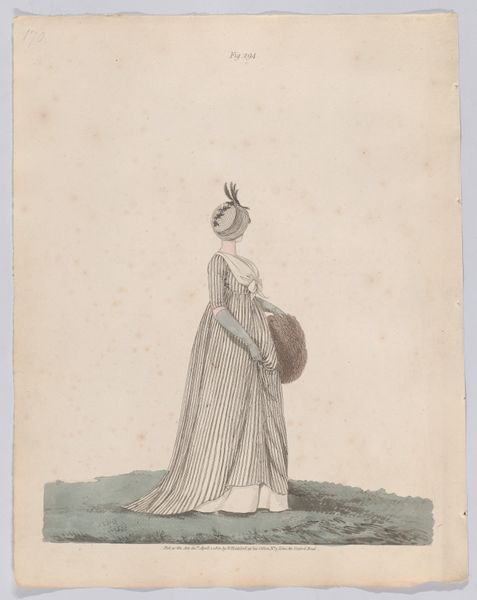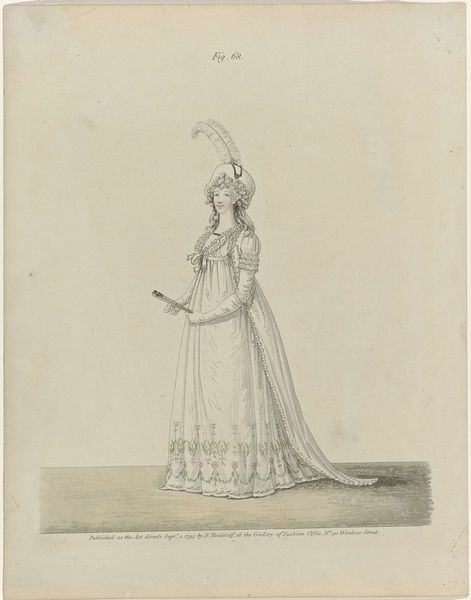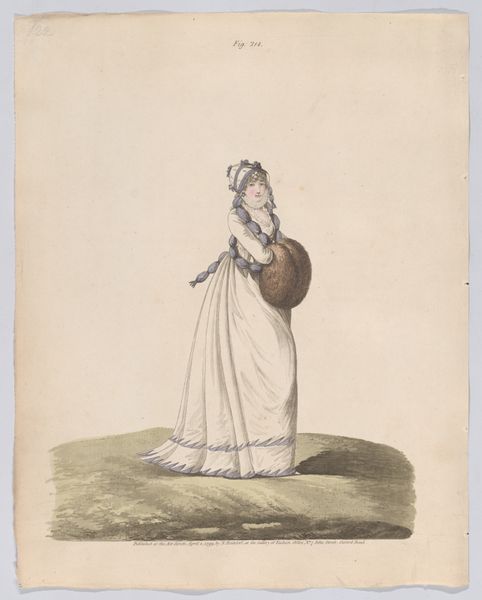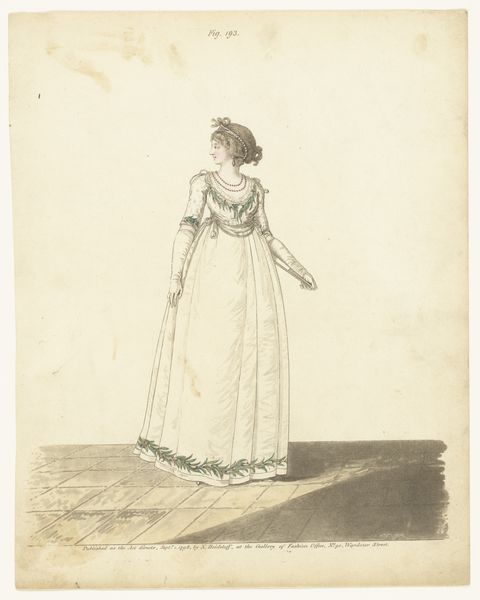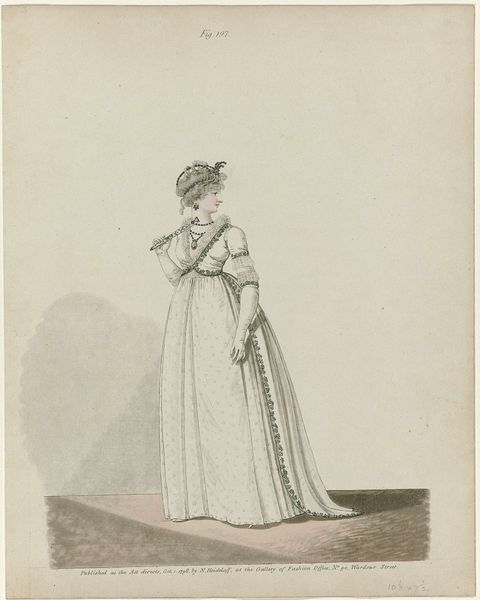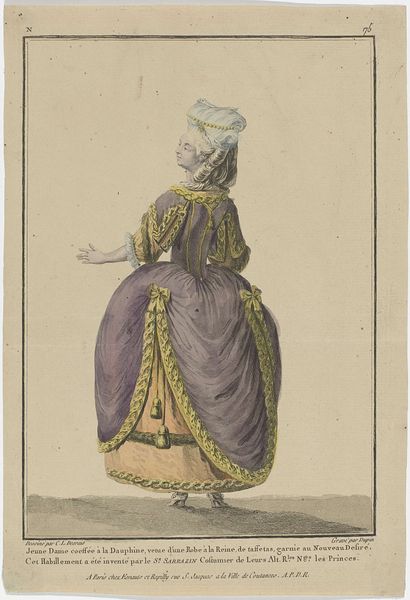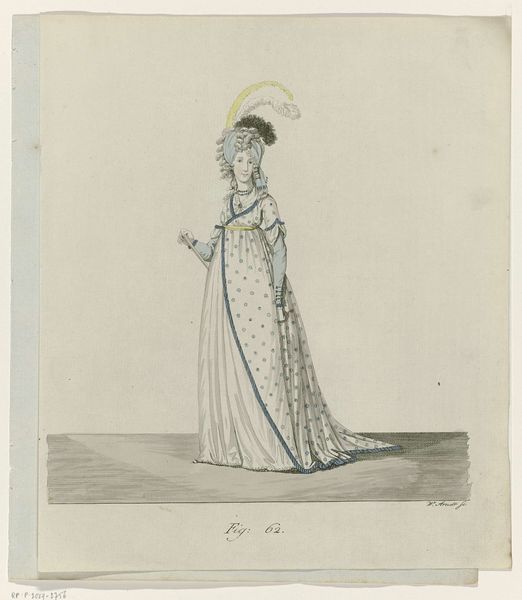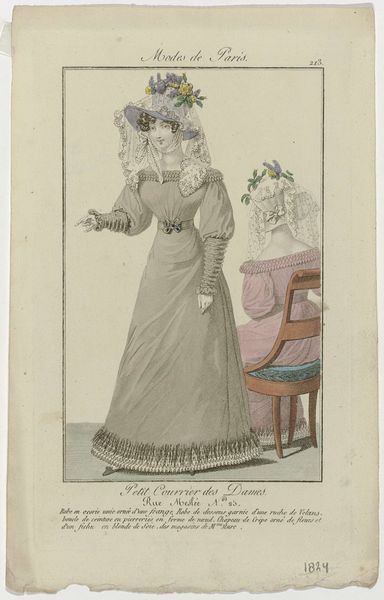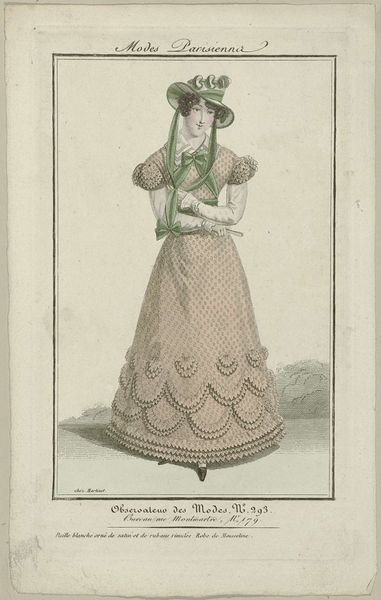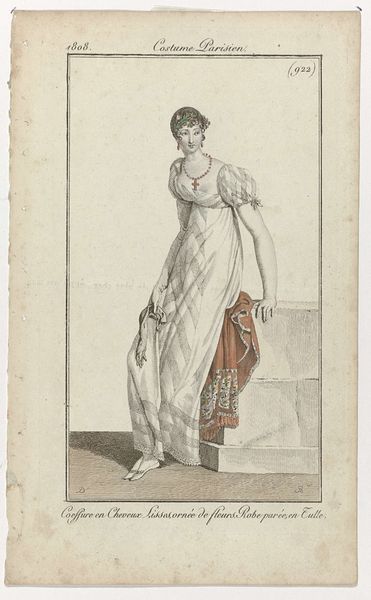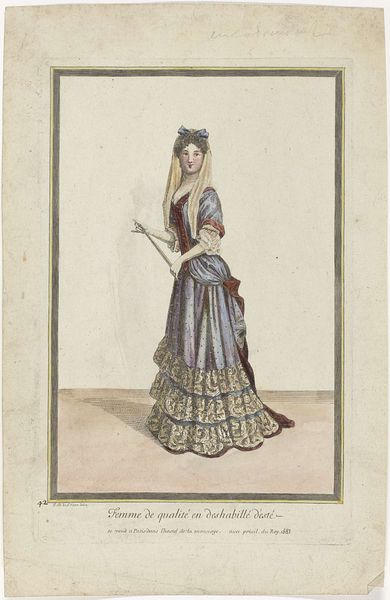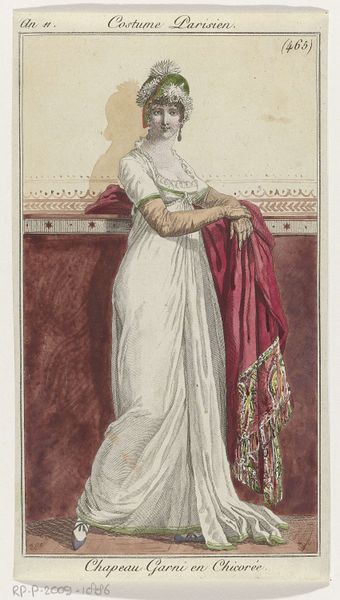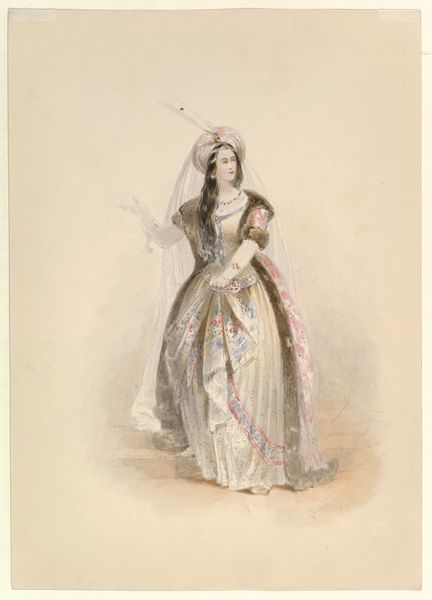
drawing, print
#
portrait
#
drawing
# print
#
historical fashion
#
character sketch
#
romanticism
#
child character design
#
sketchbook drawing
#
watercolour illustration
#
history-painting
Dimensions: height 281 mm, width 222 mm
Copyright: Rijks Museum: Open Domain
Curator: Well, that’s quite the feather display! Editor: Indeed! Today we’re looking at "Gallery of Fashion, Fig. 180," likely from 1798. It’s currently held here at the Rijksmuseum, though its creator remains anonymous. The piece is a print and drawing, featuring watercolor illustration techniques, showing a full-length portrait of a woman in high fashion. Curator: The pattern on the dress—it almost appears as if the fabric itself is made of a grid. What can you tell me about that? Editor: What strikes me is the use of materials reflecting changes in social structures and emerging industries. These illustrated fashion plates gained popularity through printmaking, reflecting advancements in textile production and rising consumer culture during that period. Curator: Interesting. I see the artist using a very limited palette here. And, this isn't merely a record of garment design; the texture in the plumes atop the hat contrasts vividly with the otherwise flatter treatment. The drawing is intended to suggest more luxurious fabrics. The item's function shifts. The function moves toward marketing aspiration. Editor: Exactly, that intersection is something I focus on as well. How did publications like Gallery of Fashion, along with other cultural institutions like this very Rijksmuseum, influence conceptions of taste? How did access to imagery shape identity during the late eighteenth century? Curator: Do you find that it empowers or subjugates its female consumers, the historical fashion in particular? Editor: Potentially both. By standardizing an idea of high fashion, the establishment set constraints. On the other hand, dissemination offered access to these ideas. Print democratizes. It's fascinating how techniques like printmaking influenced socio-political changes, while portraying elegance and luxury. Curator: That’s quite right. Editor: In retrospect, considering this image through material analysis reveals how production means contribute to culture and artistic consumption. Curator: Absolutely, and viewing it through a socio-political lens reveals power and influence. Each perspective brings depth.
Comments
No comments
Be the first to comment and join the conversation on the ultimate creative platform.
